Royal badges of England
In heraldry, the royal badges of England comprise the heraldic badges that were used by the monarchs of the Kingdom of England.

Heraldic badges are distinctive to a person or family, similar to the arms and the crest. But unlike them, the badge is not an integral component of a coat of arms, although they can be displayed alongside them. Badges are in fact complete and independent and can be displayed alone. Furthermore, unlike the arms and crest, which are personal devices that could only be displayed by the owner, the badge could be easily borne by others, in the form of a cognizance or livery badge, to be worn by retainers and adherents. Badges are displayed on standards and personal objects, as well as on private and public buildings to show ownership or patronage.[1]
History
Royal badges have been in use since the earliest stages of English heraldry. They are invariably simple devices, and numerous examples were adopted and inherited by various sovereigns. These are found in the glass and fabric of royal palaces and memorial chapels, and sometimes in the houses of those who enjoyed or anticipated royal patronage.[2]
The earliest royal heraldic badge is a sprig of common broom, said to have been worn by Geoffrey of Anjou in his cap. The broom plant or Plantegenest (planta genista in medieval Latin), thus became Geoffrey's nickname; "Plantagenet".[3] The heraldic device also became the name of the dynasty that was borne from him, which was to rule England for over 300 years. The Plantagenet kings would use this badge, sometimes combining it with other more personal devices.[3] King Henry II used the 'planta genista' as well as an escarbuncle.[4] King Richard I used a star and crescent device, which was also adopted by his brother King John. King Henry III adopted the broom sprig and the star and crescent. His son Edward I in addition to these, added the golden rose device that he inherited from his mother Eleanor of Provence. King Edward II further added the golden castle of Castile, inherited from his mother Eleanor of Castile.[2]
It was actually Richard of York, 3rd Duke of York who adopted the Plantagenet name for him and his descendants in the 15th century. It is obscure why Richard chose the name but it emphasised Richard's hierarchal status as Geoffrey's, and six English kings', patrilineal descendant during the Wars of the Roses. The retrospective usage of the name for all Geoffrey's male descendants became popular in Tudor times probably encouraged by the added legitimacy it gave Richard's great-grandson, King Henry VIII of England.[5]
Badges came into general use by the reign of King Edward III. The king himself deployed many badges alluding to his lineage, as well as new personal devices.[6]
List of royal badges
| Monarch (Reign) |
Badges[7][8] | Examples |
|---|---|---|
  (1154–1399) | ||
 King Henry II (1154–1189) |
|
 |
 King Richard I (1189–1199) |
|
  |
 King John (1199–1216) |
|
  |
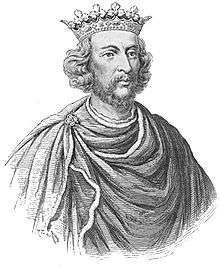 King Henry III (1216–1272) |
|
 |
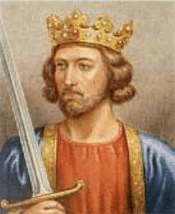 King Edward I (1272–1307) |
|
  |
 King Edward II (1307–1327) |
|
 |
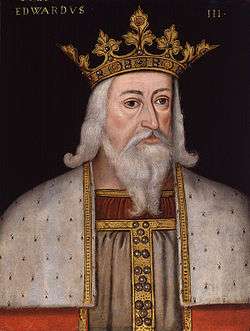 King Edward III (1327–1377) |
|
    |
.jpg) King Richard II (1377–1399) |
|
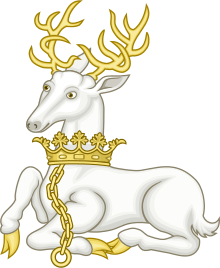    |
(1399–1461) | ||
.jpg) King Henry IV (1399–1413) |
|
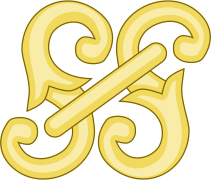   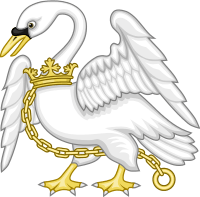 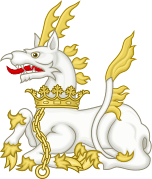 |
 King Henry V (1413–1422) |
|
  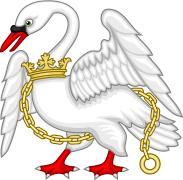 |
.jpg) King Henry VI (1422–1461) |
|
   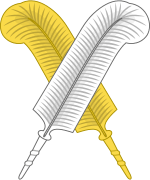 |
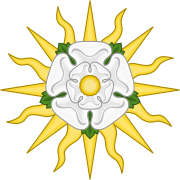  (1461–1485) | ||
 King Edward IV (1461–1483) |
|
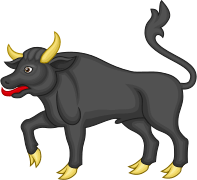 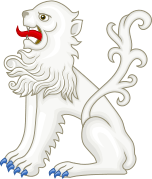 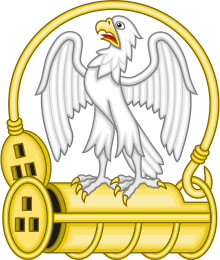 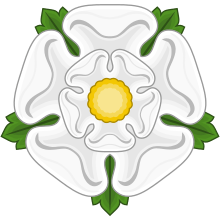  |
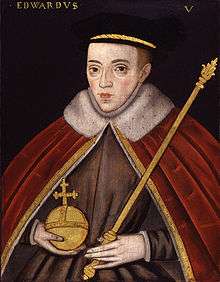 King Edward V (1483) |
|
  |
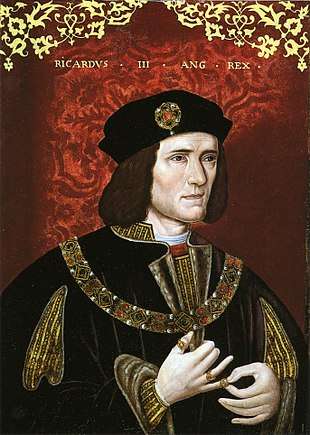 King Richard III (1483–1485) |
|
    |
(1485–1603) | ||
 King Henry VII (1485–1509) |
|
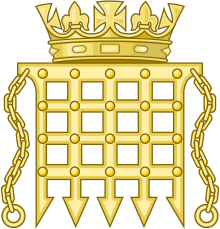  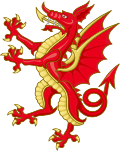  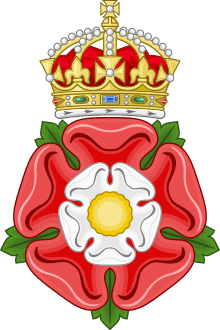 |
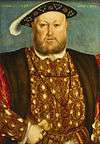 King Henry VIII (1509–1547) |
|
  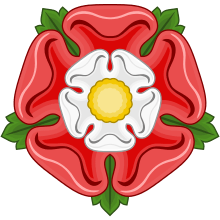  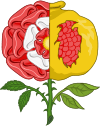 |
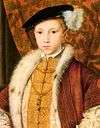 King Edward VI (1547–1553) |
|
 .svg.png)   |
 Queen Mary I (1553–1558) |
|
   |
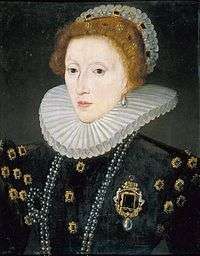 Queen Elizabeth I (1558–1603) |
|
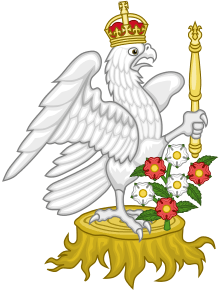    |
  (1603–1649) | ||
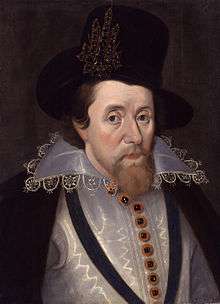 King James I (1603–1625) |
|
.svg.png) 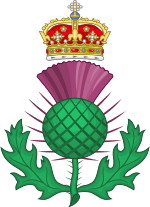 .svg.png) 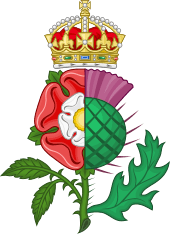 .svg.png) |
.jpg) King Charles I (1625–1649) |
|
.svg.png)  .svg.png)  .svg.png) |
(1649–1660) | ||
  (1660–1707) | ||
.jpg) King Charles II (1660–1685) |
|
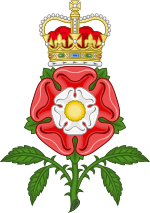   .svg.png) 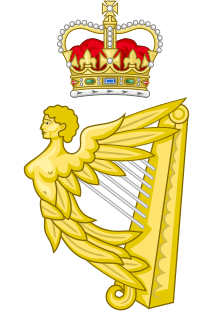 |
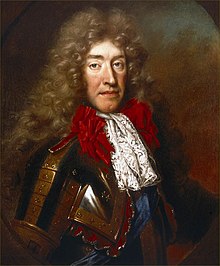 King James II (1685–1688) |
|
   .svg.png)  |
 King William III and Queen Mary II (1689–1694) |
|
   .svg.png)  |
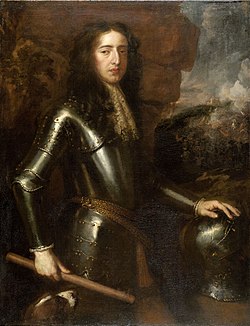 King William III (1689–1702) |
|
   .svg.png)  |
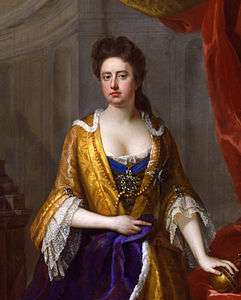 Queen Anne (1702–1707) |
|
   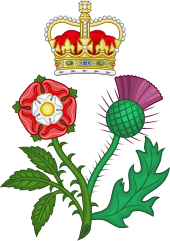  |
References
- Citations
- Brooke-Little, p.163
- Friar, p.236
- Bedingfield et al., pp.126–127
- Bedingfield et al., p.129
- Wagner, John (2001). Encyclopedia of the Wars of the Roses. ABC-CLIO. p. 206. ISBN 1-85109-358-3.
- Fox-Davies, p.453
- Brooke-Little, pp.209–215
- Montagu, James (1840). A Guide to the Study of Heraldry. London: William Pickering.
- On a banner at Crecy, 1346. Chronicle of Geoffrey le Baker.
- Tree trunk: by the howse of Herforth
- (Swan: "by the howse of Herforth", i.e. Hereford)
- tomb in Westminster Abbey
- Red Dragon: This badge was not originally, as now, shown passant upon a green mount. The mount, no doubt, originated from the fact that the red dragon was used upon a standard of the livery colours (Tudor), white and green. Woodward refers to another standard, in which the red dragon is inflamed and the field seme of flames. The dragon, according to early Welsh tradition, was of "ruddy gold," and is to be found both red and gold
- Hawthorn bush: Woodward, who recites the story that after the battle of Bosworth the golden circlet of King Richard's helm was found in a hawthorn bush, and with this Lord Stanley crowned King Henry on the battlefield
- Tudor Rose: This was variously represented. Burke and Woodward both mention the forms {a) quarterly argent and gules, and (b) a white rose superimposed upon a red rose ; whilst Woodward also mentions {c) per pale argent and gules. On one of this king*s standards (MS. I. 2, Coll. Arms) both red roses barbed and seeded proper, and white roses barbed and seeded proper, are found, as also " a red rose surmounted of a white rose with two buds slipped vert," and "a red rose sur-mounted of a white rose encircled by rays of the sun gold
- Pinches, J.H & R.V., The Royal Heraldry of England, p.153. ISBN 090045525X
- In 1801, imperially crowned, designated as badge for Scotland.
- Bibliography
- Bedingfeld, Henry; Gwynn-Jones, Peter (1993). Heraldry. London: Bison Books Ltd. ISBN 1-85422-433-6.
- Brooke-Little, J.P., FSA (1983) [1950], Boutell's Heraldry (Revised ed.), London: Frederick Warne LTD, ISBN 0-7232-3093-5
- Pinches, John Harvey; Pinches, Rosemary (1974), The Royal Heraldry of England, Heraldry Today, Slough, Buckinghamshire: Hollen Street Press, ISBN 0-9004-5525-X
- Fox-Davies, Arthur Charles; Johnston, Graham (1909). A Complete Guide to Heraldry. New York: Dodge Pub. Co. ISBN 0-517-26643-1.
- Siddons, Michael Powell (2009). Heraldic Badges in England and Wales. 2.1 (Royal Badges). Woodbridge: Society of Antiquaries/Boydell. ISBN 9781843834939.
- Willement, Thomas (1821), Regal Heraldry, London: W. Wilson
See also
| Wikimedia Commons has media related to Royal heraldic badges of England. |
- Heraldic badge
- Royal Standards of England
- Royal Supporters of England
- Queen's Beasts
- Royal Arms of England
- Prince of Wales's feathers
.svg.png)